Text and photos by Gary Friedrichsen. Other photos by Robert Lockett.
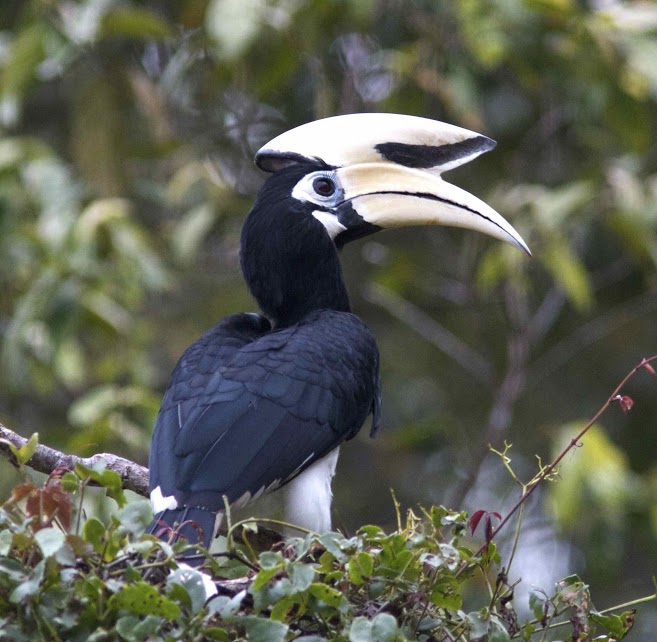
Oriental Pied Hornbill
We were fortunate to see all of the species of Hornbills that live in Borneo. Interesting birds that seal the females into a tree cavity nest and the male then feeds her until the chicks fledge.
I feel extremely blessed to have visited many parts of this amazing planet, and been awed by the grandeur of both human and natural wonders. But after a near lifetime of exploration, research, and exposure to many cultures it is a fantastic pleasure to be completely taken off guard. I recently had the pleasure of accompanying a good friend on an excursion to the island of Borneo.
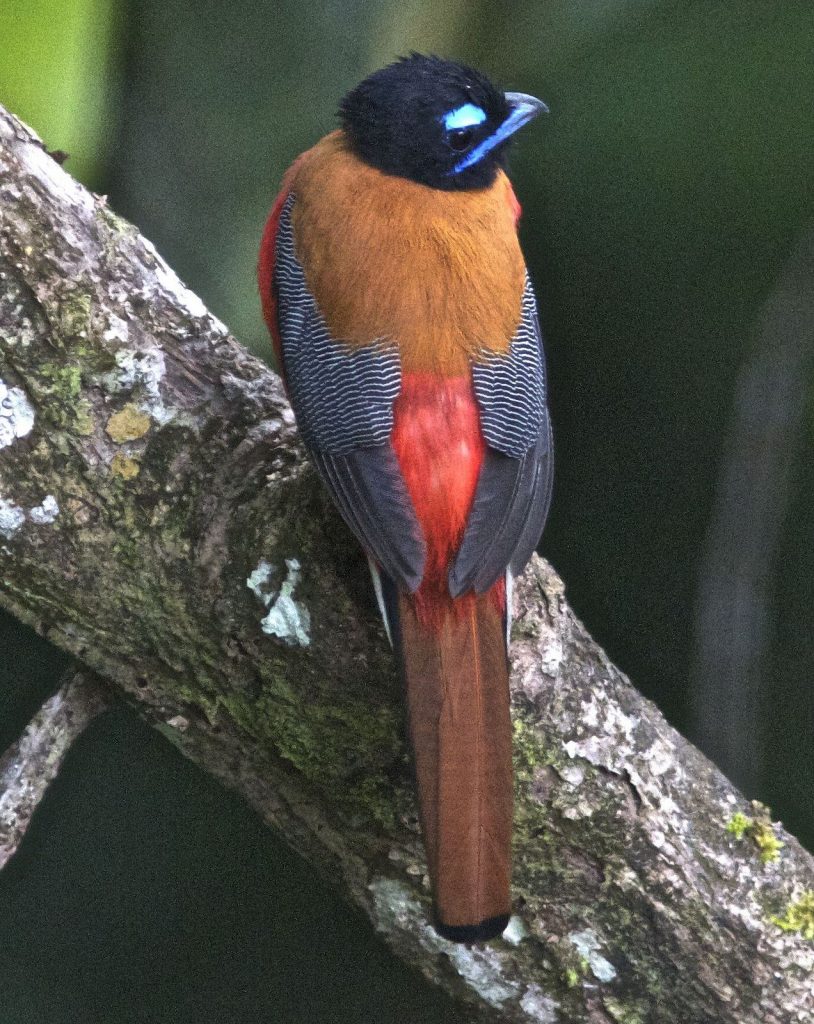
Cinnamon-rumped Trogon
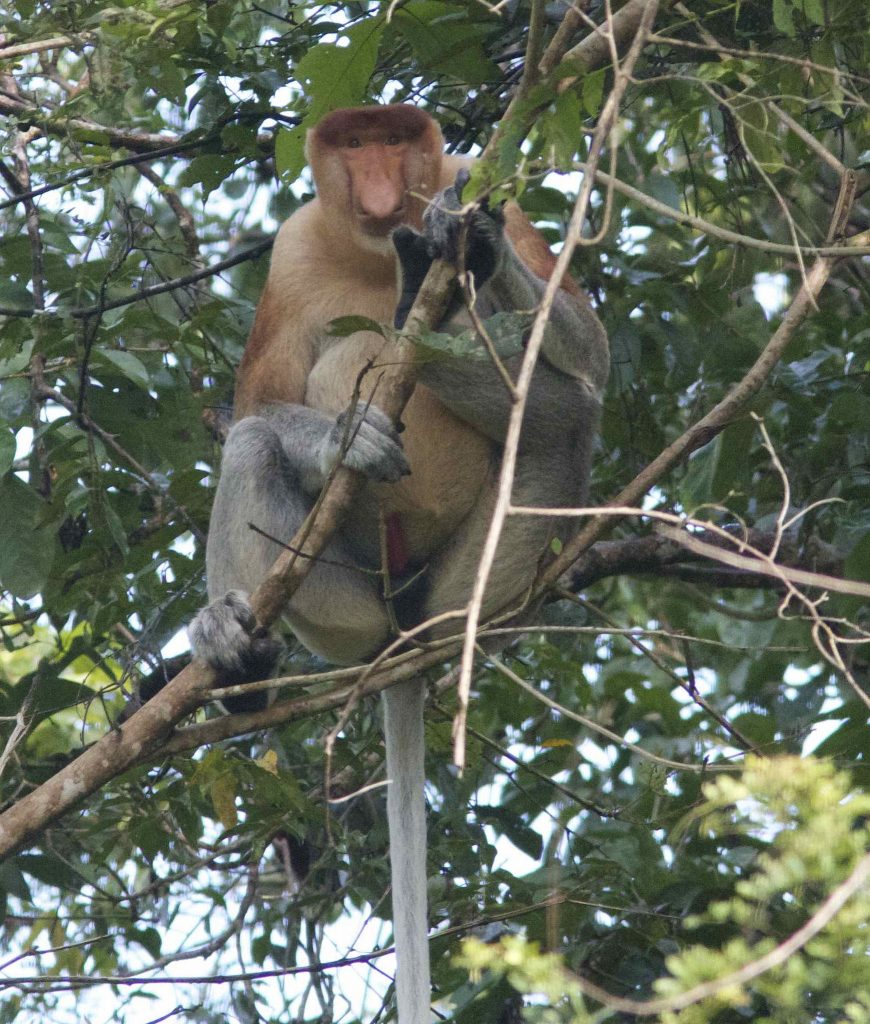
Male Proboscis Monkey
The Jimmy Durante’s of the Bornean rainforest. These large primates travel in small groups along the river feeding on leaves and shoots.
Phone rings…. “Hello!” “Hey there, this is Bob Lockett. Have you ever thought about going to Borneo?”
Well no, not really. My mind immediately conjured images of bones in the nose headhunters and endless miles of humid, hot rainforests. Didn’t Margaret Mead study natives there and rock our thoughts about male-female roles in society?

Pygmy Asian Elephants
We had an hour with a group of 19 of these small elephants as they bathed, feed and “played” as these two young males are doing.
I did know that the rainforests there, like others around the world, were being devastated by logging and slash and burn farming and that those activities were putting many of the native birds and mammals at risk. I jumped at the chance.
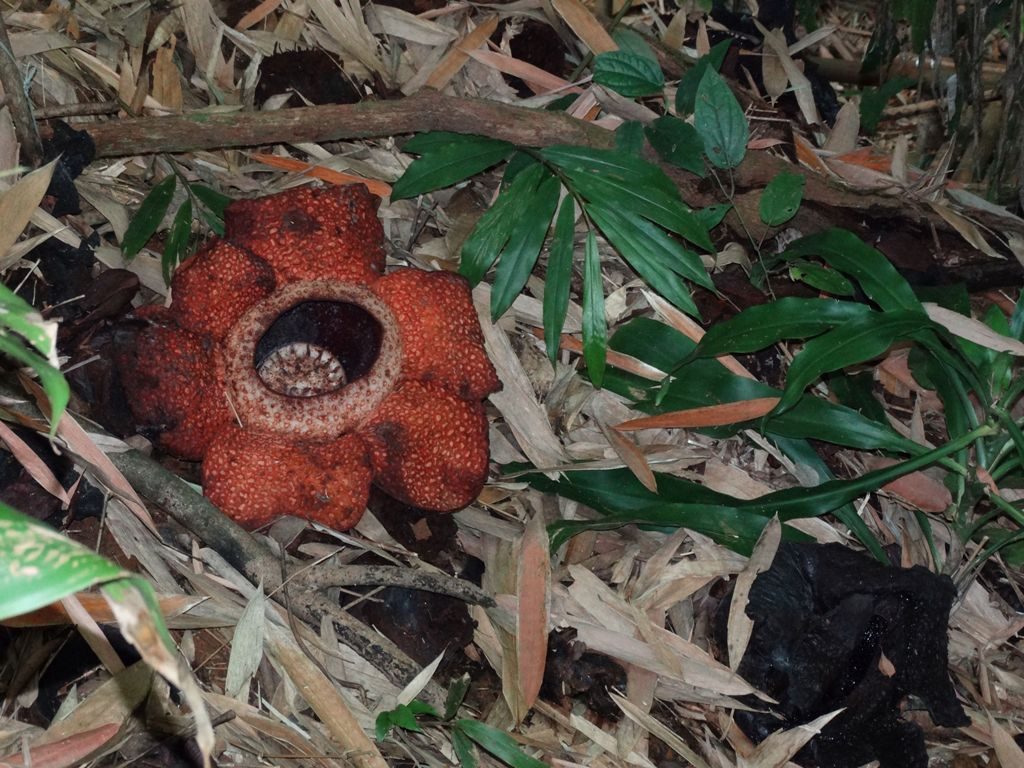
A Rafflesia blossom can reach 100 cm in diameter. This is the largest single blossom in the world. Their smell attracts the carrion insects that spread the pollen. Very stinky!
Borneo is the third largest island in the world following Greenland and New Guinea (where Dr. Mead actually did her research). There are over 200 species of land mammals; more than 400 native birds, and an amazing botanical display.
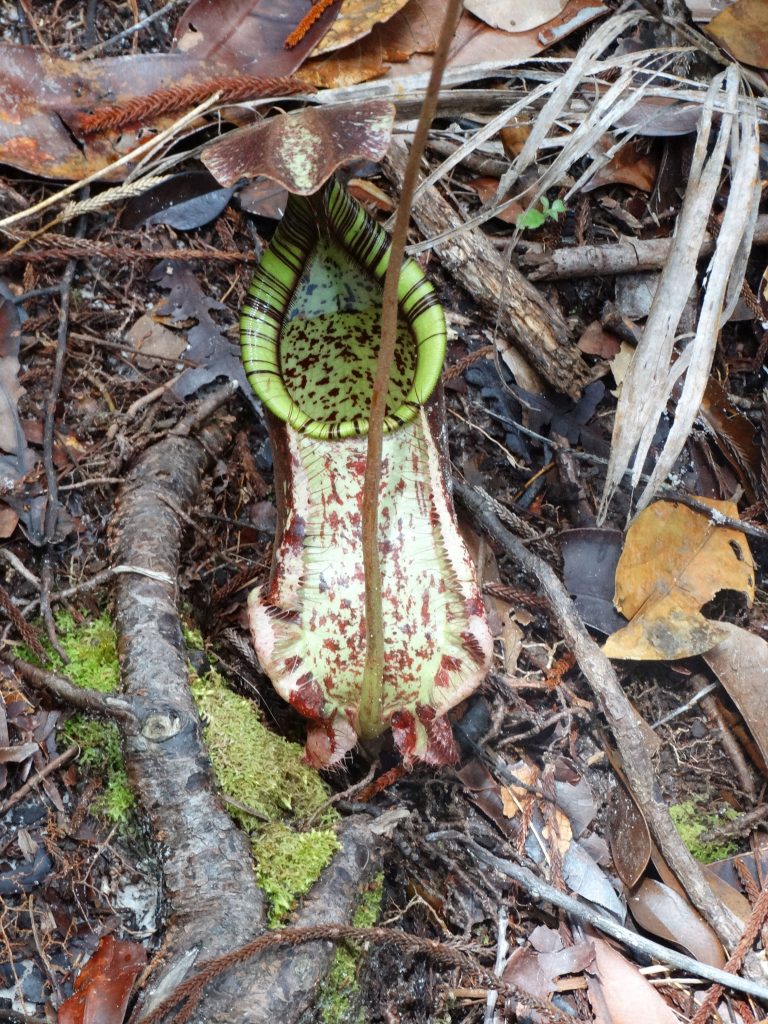
One of the 164 species of pitcher plants in Borneo, this one was the largest we encountered and measured about 16 cm.
This is the land of the “Old Man of the Jungle” the Orangutan. It is the home of Pygmy-Asian Elephants, Giant Flying Squirrels, the almost extinct Asian Rhinoceros, the Proboscis Monkey and eight other primates.
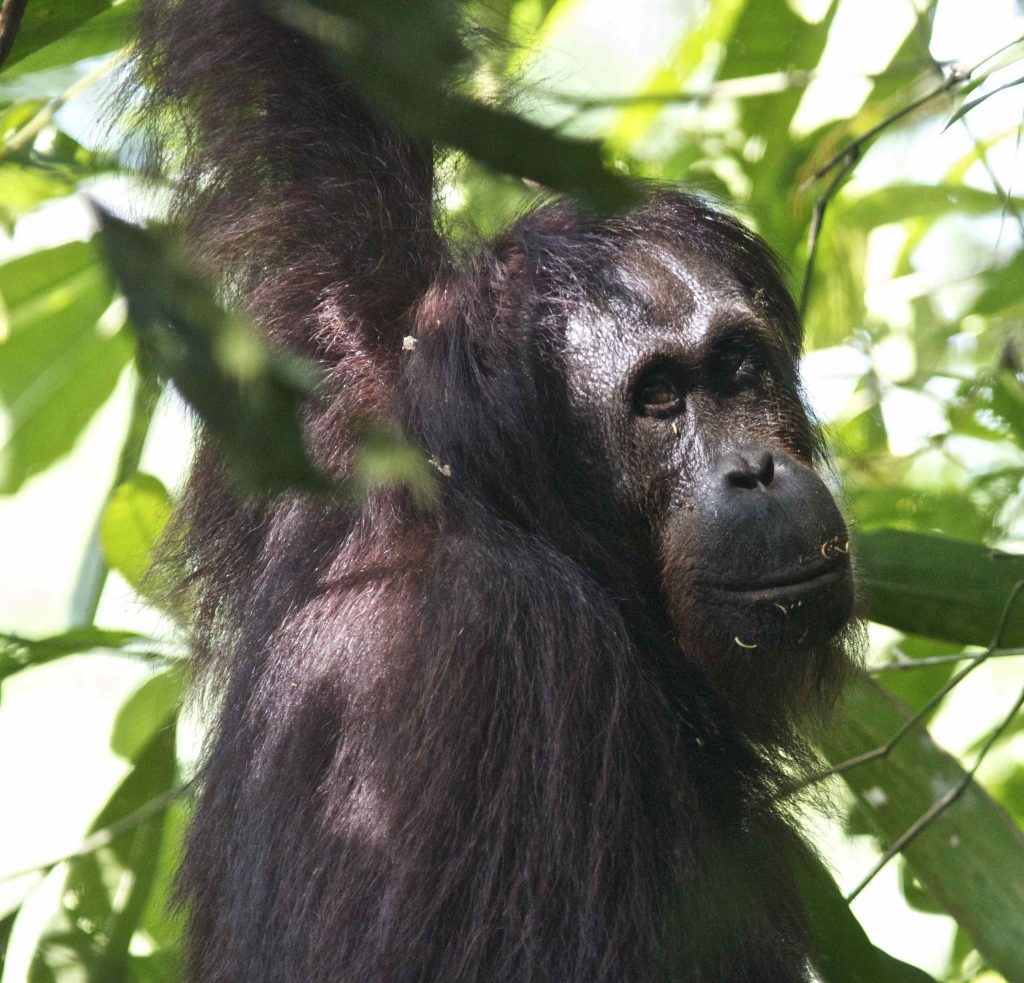
Orangutan
The “Old man of the jungle”. This male Orangutan was bored by the attention given him by the eager passengers in the boats below. He often turned his back on the crowds much to our dismay.
It was wonderful to share in seeing so much fantastic nature. Hornbills, Trogons, Broadbills, Barbets, Babblers and Bulbuls were seen in profusion. Close encounters with Macaque and Langur monkeys, Orangutans and even the big wild-eyed Western Tarsier. The latter is a very small (~12”), long-tailed primate that jumps from tree to tree feeding on smaller animals at night.
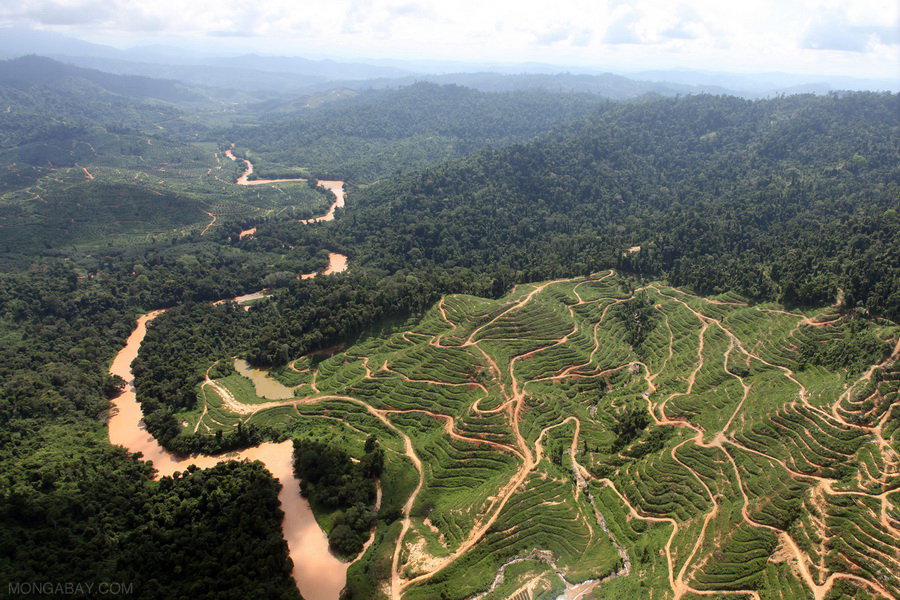
www.saynotopalmoil.com
Palm oil plantation in Malaysia. This is one of the two large threats to wildlife and ecosystems in Borneo.
Two major environmental issues facing Bornean wildlife are unsustainable timber harvest of hardwood forests and additional deforestation for palm oil plantations. According to a recent scientific report ( Feb. 2018), Borneo has lost over 100,000 orangutans ( half its population ) in just 16 years due to habitat loss from logging and palm oil plantations.
While flying over the Kinabatangan River, we could see hundreds of miles of cleared forest and a very small buffer of native habitat along the river. The cleared area was solid palm oil production. This was an unending view of monoculture that provides very little habitat to the native animals.
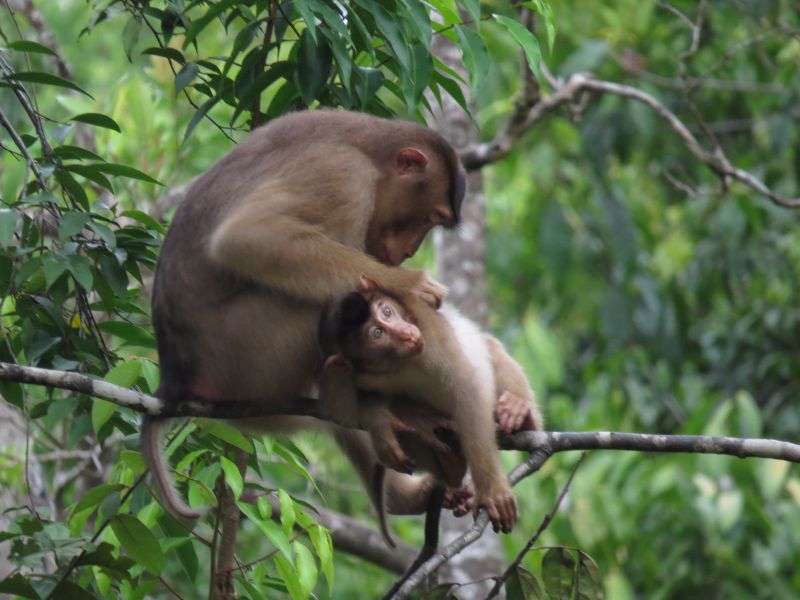
Pig-tailed Macaque (above) and the Long-tailed Macaque were our most commonly encountered primates. Very enjoyable to watch as they scampered through he trees or, like this mother son pair doing a bit of grooming.
Once on the river we were astonished by the richness of the thin strip of native forest. Here were Pygmy Elephants, comical Proboscis Monkeys, Smooth Otters, and an array birds that defy our imagination.
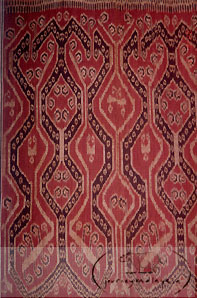
Pua kumbu
www.journeymalaysia.com
Remember my first thoughts of the inhabitants of Borneo? I was in for an education, when we visited a museum dedicated to Iban* culture Sarawak. Bob and I were both awed by the delicate tapestries and garments on display. These were artifacts of very high culture that we were totally ignorant of and that pre-dated Columbus’s voyages. We also saw Iban natives weaving patterns that have been passed down for over 700 years.
Pua kumbu is the cotton cloth woven by traditional Iban women from weavers who have past the designs and know how down for hundreds of years with no written language only hands-on training from an elder.
*Iban tribal members were one of the first settlers in Borneo. Their culture dates back over 700 years and despite no written language their verbal history recounts early interactions with other tribes vying for prime agricultural land. They adopted headhunting as a method to produce fear in their rivals yet held strong religious views. Most are now Christians and Muslims. Their production of brightly colored cloth for ceremonies and wood carvings are rich in texture and historic tradition.
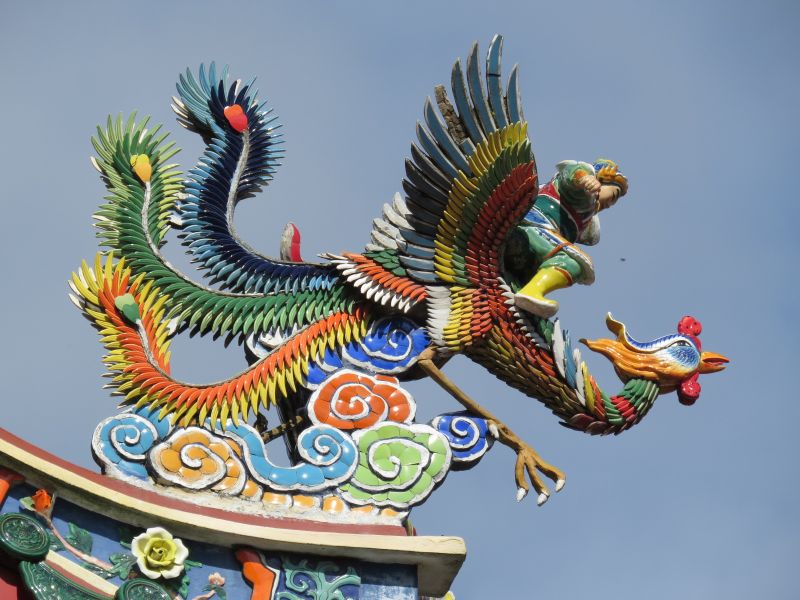
Joss House Temple Kuching
The Chinese have had dealings in Borneo for over two thousand years and they have a large population living throughout Malaysia and Indonesia. We learned a good deal of history along with our quest for wildlife!
We had come for the birds and mammals but our enlightenment towards this and other unknown cultures was the real reward.
Guide Service: We traveled with “Field Guides” as our tour group organizer. They were “spendy” but excellent.
Acommodations: Batik Boutique in Kuching ( www.batikboutiquehotel.com).
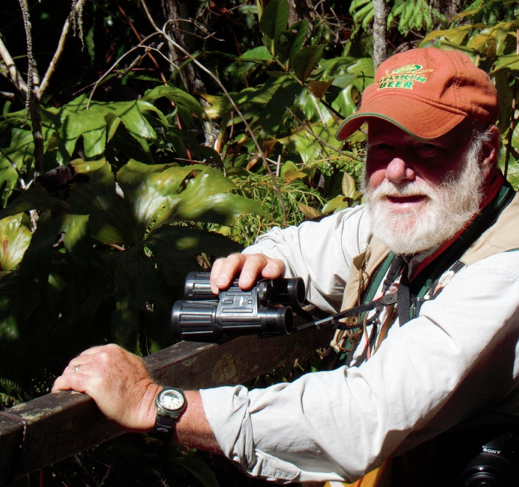
Old Naturalist’s note: “I first met Gary Friedrichsen when he was living in a shack in Humboldt Bay, Northern California. There was an outhouse, no running water or electricity. Gary spent over 45 years plying the seas as marine biologist, specializing in whale and dolphin identification for NMFS, Cornell University, and Scripps Institute of Marine Biology. He also was a commercial salmon fisherman for a number of years off the coast of California and Oregon. Besides being an entertaining writer and excellent photographer, Gary is a wonderful person to be around.”




This was a great story and fantastic pics. What an honor Larry to have met this man and call him friend. The history in him needs to continue to be tapped. Thank you so much for sharing!